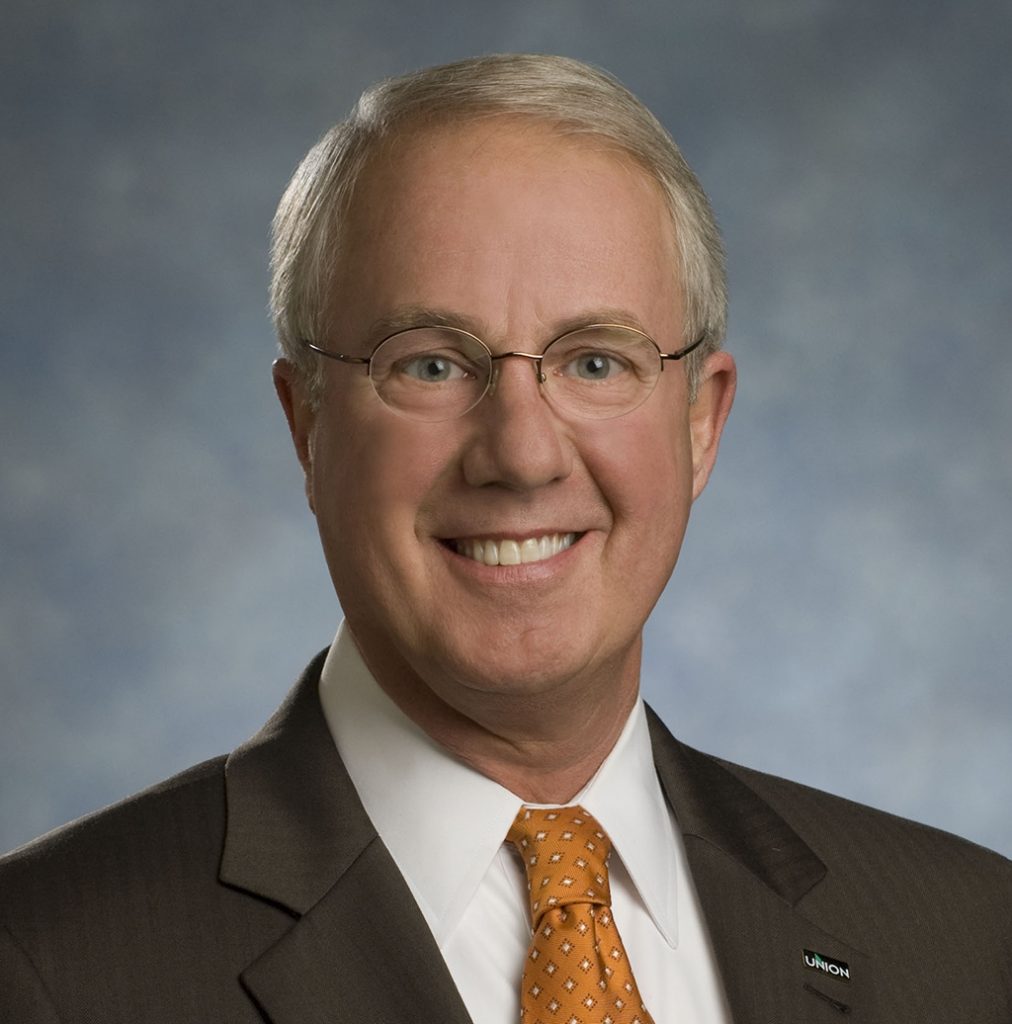
Bank of America, Truist and Wells Fargo were the top three in local deposit market share. They also saw the largest declines of any banks in the region.
An exodus of nearly $3 billion in deposits from Richmond-area bank branches occurred over the last year, according to the latest market share report released in recent weeks by the FDIC.
As of June 30, the 260 bank branches in the Richmond region held $54.85 billion in deposits. That’s down $2.93 billion, or 5%, from the year-earlier period, when the total was $57.79 billion.
Of the 27 banks with a retail presence in the local market, 16 reported a decline in deposits in their Richmond-area locations between June 30, 2022, and June 30 of this year.
It marks the first time in recent memory that collective deposits declined in the region in a given year and coincides with rising interest rates, which have caused some customers to chase better yields elsewhere.
The bulk of the decline was carried by the region’s big three: Bank of America, Truist and Wells Fargo. Combined, those deposits dropped $3.96 billion across their 106 Richmond-area branches.
Bank of America, which for more than a decade has controlled the most deposits of any bank in the Richmond market by far, reported a decline of $1.09 billion in its local deposit base. That took it from $24.88 billion in its 18 local branches last year to $23.78 billion as of June 30 this year. It equates to a 4% drop, though Bank of America still held the No. 1 spot in overall deposits and far outpaced the pack with a 43% market share.
Truist, while second on the list in market share, saw the largest percentage deposit decline of any bank in the region over the 12 months in the report. It held $9.19 billion across its 43 local branches, down $2.03 billion, or 18%, from $11.22 billion last year. Its market share in the region was nearly 17% as of June 30, down from 19% a year earlier.
Wells Fargo showed an 8% decline from $8.87 billion last year to $8.12 billion in its 45 local branches as of June 30. It held onto third place on the list with a market share of nearly 15%.
Others on list reporting a material decline included: TowneBank (down $48 million); Primis Bank ($128 million); United Bank ($85 million); Village Bank ($33 million); Bank of Southside Virginia ($20.6 million); Blue Ridge Bank ($116 million); First Community Bank ($25 million); Fulton Bank ($9 million); Citizens Bank and Trust ($7.5 million); New Horizon Bank ($4.5 million); and Chesapeake Bank ($9.9 million).
Those declines were counteracted by the 11 banks that showed an increase in local deposits over the course of the year.
The largest increase was reported by Atlantic Union Bank, which was up $1.24 billion, or 30%, for the year to reach $5.33 billion at it 21 local branches.
The biggest leap in the rankings was achieved by Chase Bank, the national banking giant that’s been on a branch expansion streak here since opening in the market several years ago. It grew its local deposits by $137 million over the 12 months, reaching $251 million at the eight area branches it had as of June 30. That helped it leapfrog Citizens Bank and Trust, Fulton Bank and First Community Bank in the rankings to break into the top 15.
Another noticeable increase was seen at Charlotteville-based Virginia National Bank, which has one branch in the Richmond region, in Scott’s Addition. It made its debut on last year’s list after opening the branch and reporting $927,000 in deposits. As of June 30 of this year, that total grew to $9.64 million.
Others to see a material increase were: SouthState Bank (up $3 million); First Citizens Bank & Trust (up $45 million); Touchstone Bank ($13 million); and First Bank and Trust ($20 million).
Local bankers say the deposit retreat seen at most banks has to do with rising interest rates and the race by customers to seek higher yields in an assortment of other products at other institutions, including CDs, money market accounts and U.S. Treasuries.
“We can’t compete with the Treasury at the moment,” said Candace Haggerty, the Richmond market leader for Bank of America’s preferred banking group.
Larger banks, such as Bank of America, typically haven’t been paying interest rates on deposits as high as what Treasurys have paid in recent months.
But for banks smaller than BofA and its larger peers, there’s a bit of an arms race to capture some of the churn, said Victor Branch, Richmond market president for BofA.
“It’s highly competitive with the regional banks and smaller banks,” Branch said. “They are trying to buy their deposits and paying a bit of a higher yield because there is a race for those to get those deposits back or up. We don’t see much shifting in the big banks like Bank of America, Wells Fargo and Truist. Our friends at the credit unions do push hard too.”
Rex Smith, Richmond region head of United Bank, said the local numbers may also illustrate how some banks were slow to increase the rates they pay on deposits amid the rapid rise of interest rates on loans.
“When rates began to rise no one predicted they’d rise as much as they have,” Smith said. “Some banks were slower to react to that in passing that on to customers, so it was tough for some of those banks to retain those deposits.
“In the decade before the recent rate run-up, certificates of deposit and similar products paid basically zero in interest and there wasn’t much difference between the offerings at competitor banks,” he added. “That’s changed as depositors are now shopping around for better rates.
“The difference now between 4.5% versus 2% is a big difference,” Smith said. “And consumers are aware of that.”
Billy Beale, who recently came out of retirement to take the CEO seat at Blue Ridge Bank, said there’s a pandemic-era reason that banks like his are showing declines in the deposit base.
“You’ve got the runoff from the PPP money, runoff from all of the stimulus that was put into the marketplace in 2020 and 2021,” he said, referring to the Paycheck Protection Program that pumped billions of dollars of stimulus money into businesses at the height of the pandemic.
Branch and Haggerty said depositors also have shifted money to investment products offered by such institutions as BofA’s Merrill Lynch, stats that don’t get captured in the FDIC reports.
As for how BofA has held on to such a dominant market share for so many years, Branch said it has to do with, in part, the staying power of the bank’s name over a long period of consolidation in the industry.
“It can’t be overstated, our brand is so tried and true and trusted in Richmond. We’ve been Bank of America since 1998,” Branch said. “Our logo has been on the street that long and we have shown stability and growth in the marketplace.”
That stability helps the bank land and keep big institutional clients, such as the Commonwealth of Virginia, which brings with it a big batch of steady deposits, Branch said.
Another notable stat from this year’s list is the continued decline in the number of total branches in the Richmond market. The region had 260 retail bank locations as of June 30, down from 267 last year. That’s also down from 317 five years ago and down from 360 a decade ago.

Bank of America, Truist and Wells Fargo were the top three in local deposit market share. They also saw the largest declines of any banks in the region.
An exodus of nearly $3 billion in deposits from Richmond-area bank branches occurred over the last year, according to the latest market share report released in recent weeks by the FDIC.
As of June 30, the 260 bank branches in the Richmond region held $54.85 billion in deposits. That’s down $2.93 billion, or 5%, from the year-earlier period, when the total was $57.79 billion.
Of the 27 banks with a retail presence in the local market, 16 reported a decline in deposits in their Richmond-area locations between June 30, 2022, and June 30 of this year.
It marks the first time in recent memory that collective deposits declined in the region in a given year and coincides with rising interest rates, which have caused some customers to chase better yields elsewhere.
The bulk of the decline was carried by the region’s big three: Bank of America, Truist and Wells Fargo. Combined, those deposits dropped $3.96 billion across their 106 Richmond-area branches.
Bank of America, which for more than a decade has controlled the most deposits of any bank in the Richmond market by far, reported a decline of $1.09 billion in its local deposit base. That took it from $24.88 billion in its 18 local branches last year to $23.78 billion as of June 30 this year. It equates to a 4% drop, though Bank of America still held the No. 1 spot in overall deposits and far outpaced the pack with a 43% market share.
Truist, while second on the list in market share, saw the largest percentage deposit decline of any bank in the region over the 12 months in the report. It held $9.19 billion across its 43 local branches, down $2.03 billion, or 18%, from $11.22 billion last year. Its market share in the region was nearly 17% as of June 30, down from 19% a year earlier.
Wells Fargo showed an 8% decline from $8.87 billion last year to $8.12 billion in its 45 local branches as of June 30. It held onto third place on the list with a market share of nearly 15%.
Others on list reporting a material decline included: TowneBank (down $48 million); Primis Bank ($128 million); United Bank ($85 million); Village Bank ($33 million); Bank of Southside Virginia ($20.6 million); Blue Ridge Bank ($116 million); First Community Bank ($25 million); Fulton Bank ($9 million); Citizens Bank and Trust ($7.5 million); New Horizon Bank ($4.5 million); and Chesapeake Bank ($9.9 million).
Those declines were counteracted by the 11 banks that showed an increase in local deposits over the course of the year.
The largest increase was reported by Atlantic Union Bank, which was up $1.24 billion, or 30%, for the year to reach $5.33 billion at it 21 local branches.
The biggest leap in the rankings was achieved by Chase Bank, the national banking giant that’s been on a branch expansion streak here since opening in the market several years ago. It grew its local deposits by $137 million over the 12 months, reaching $251 million at the eight area branches it had as of June 30. That helped it leapfrog Citizens Bank and Trust, Fulton Bank and First Community Bank in the rankings to break into the top 15.
Another noticeable increase was seen at Charlotteville-based Virginia National Bank, which has one branch in the Richmond region, in Scott’s Addition. It made its debut on last year’s list after opening the branch and reporting $927,000 in deposits. As of June 30 of this year, that total grew to $9.64 million.
Others to see a material increase were: SouthState Bank (up $3 million); First Citizens Bank & Trust (up $45 million); Touchstone Bank ($13 million); and First Bank and Trust ($20 million).
Local bankers say the deposit retreat seen at most banks has to do with rising interest rates and the race by customers to seek higher yields in an assortment of other products at other institutions, including CDs, money market accounts and U.S. Treasuries.
“We can’t compete with the Treasury at the moment,” said Candace Haggerty, the Richmond market leader for Bank of America’s preferred banking group.
Larger banks, such as Bank of America, typically haven’t been paying interest rates on deposits as high as what Treasurys have paid in recent months.
But for banks smaller than BofA and its larger peers, there’s a bit of an arms race to capture some of the churn, said Victor Branch, Richmond market president for BofA.
“It’s highly competitive with the regional banks and smaller banks,” Branch said. “They are trying to buy their deposits and paying a bit of a higher yield because there is a race for those to get those deposits back or up. We don’t see much shifting in the big banks like Bank of America, Wells Fargo and Truist. Our friends at the credit unions do push hard too.”
Rex Smith, Richmond region head of United Bank, said the local numbers may also illustrate how some banks were slow to increase the rates they pay on deposits amid the rapid rise of interest rates on loans.
“When rates began to rise no one predicted they’d rise as much as they have,” Smith said. “Some banks were slower to react to that in passing that on to customers, so it was tough for some of those banks to retain those deposits.
“In the decade before the recent rate run-up, certificates of deposit and similar products paid basically zero in interest and there wasn’t much difference between the offerings at competitor banks,” he added. “That’s changed as depositors are now shopping around for better rates.
“The difference now between 4.5% versus 2% is a big difference,” Smith said. “And consumers are aware of that.”
Billy Beale, who recently came out of retirement to take the CEO seat at Blue Ridge Bank, said there’s a pandemic-era reason that banks like his are showing declines in the deposit base.
“You’ve got the runoff from the PPP money, runoff from all of the stimulus that was put into the marketplace in 2020 and 2021,” he said, referring to the Paycheck Protection Program that pumped billions of dollars of stimulus money into businesses at the height of the pandemic.
Branch and Haggerty said depositors also have shifted money to investment products offered by such institutions as BofA’s Merrill Lynch, stats that don’t get captured in the FDIC reports.
As for how BofA has held on to such a dominant market share for so many years, Branch said it has to do with, in part, the staying power of the bank’s name over a long period of consolidation in the industry.
“It can’t be overstated, our brand is so tried and true and trusted in Richmond. We’ve been Bank of America since 1998,” Branch said. “Our logo has been on the street that long and we have shown stability and growth in the marketplace.”
That stability helps the bank land and keep big institutional clients, such as the Commonwealth of Virginia, which brings with it a big batch of steady deposits, Branch said.
Another notable stat from this year’s list is the continued decline in the number of total branches in the Richmond market. The region had 260 retail bank locations as of June 30, down from 267 last year. That’s also down from 317 five years ago and down from 360 a decade ago.





Perhaps deposits at Truist and Wells Fargo fell due to the closing of numerous branches. Some depositors most probably migrated to banks that were more convenient or provided better rates for CD’s.
Or both reasons in our case Brian combined with their horrible customer service at both the branches and on the phone.
Hard to communicate with the big 3s call centers!
This is good. The best place to have your money and loans is a small local credit union.